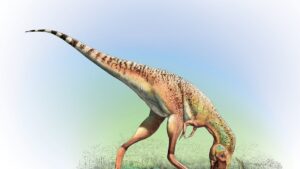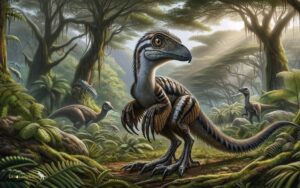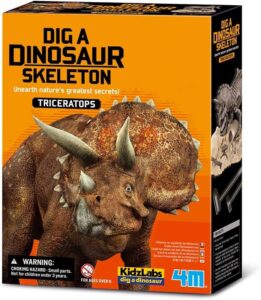Are Dinosaurs Bigger Than Blue Whales
When discussing the titans of the ancient world and today's oceans, one enters a realm where size challenges the imagination. The blue whale, currently holding the title for the largest animal alive, presents a fascinating comparison to the colossal dinosaurs that roamed the earth millions of years ago.
Scientists have unearthed fossils suggesting some dinosaurs might rival, if not surpass, the size of blue whales. However, the quest to definitively crown the king of size is complicated by the incomplete nature of the fossil record and the different ways size can be measured.
This ongoing debate not only captivates those with a passion for the natural world but also holds implications for understanding the limits of life's physical scale on Earth.
Key Takeaways
- Blue whales can weigh up to 200 tons, surpassing the mass of any known dinosaur.
- Some dinosaurs reached lengths of 100 feet, comparable to blue whales, but were lighter in weight.
- Advanced scientific techniques reveal that while some dinosaurs were massive, blue whales hold the record for the largest animals by weight.
- The diversity in size among dinosaurs and blue whales highlights the evolutionary adaptations to their respective environments.
The Size of Blue Whales
Blue whales, the largest animals ever known to have existed, reach lengths of up to 100 feet (30 meters) and can weigh as much as 200 tons. This considerable size isn't merely for show; it plays a crucial role in their survival in the marine environment.
Their massive bodies allow them to store large amounts of energy, essential for their long migrations across the oceans. Additionally, their size provides a significant advantage in their feeding strategy. Blue whales primarily feed on krill, and during feeding seasons, they consume approximately 4 tons of krill per day.
This feat is achieved through their baleen plates, which they use to filter-feed. The sheer volume of water they can process in a single gulp, thanks to their enormous size, makes their feeding efficiency unparalleled in the marine world.
Giants Among Dinosaurs
While blue whales hold the title for the largest animals in the marine world, some dinosaurs once walked the earth with dimensions that challenge this modern-day marvel. Among these ancient giants, the Sauropods stand out for their sheer size and mass.
These long-necked, long-tailed herbivores, such as the Argentinosaurus and Patagotitan, represent the pinnacle of terrestrial size, with estimates suggesting they reached lengths up to 100 feet or more. Their massive bodies, supported by pillar-like legs, evolved to navigate and exploit their lush, Jurassic to Cretaceous environments.
These dinosaurs' size wasn't just for show; it played a crucial role in their survival, from deterring predators to reaching high vegetation. Understanding these giants illuminates the extreme biological possibilities of vertebrate life on Earth.
Measuring Ancient Giants
To accurately compare the dimensions of dinosaurs and blue whales, scientists employ various size metrics, utilizing length, mass, and volume as key indicators. Insights from fossil evidence play a crucial role, offering a tangible glimpse into the size and structure of these ancient behemoths.
Moreover, modern analysis techniques, including digital reconstruction and biomechanical modeling, have refined our understanding of how these giants measured up to one another.
Comparing Size Metrics
In comparing the immense sizes of ancient dinosaurs to the modern blue whale, scientists rely on a variety of metrics, including mass, volume, and length, to accurately assess their dimensions. This nuanced approach allows for a comprehensive understanding of the scale and structure of these magnificent creatures, providing insights into their biology and lifestyle.
- Mass: Determines the overall weight, offering clues about the creature's lifestyle and habitat.
- Volume: Helps in understanding the spatial dimensions and the body density.
- Length: Gives a straightforward measurement from head to tail, indicating physical dominance.
- Bone Density: Assists in estimating the mass and lifestyle adaptations.
- Comparative Anatomy: Facilitates the alignment of dinosaur fossils with modern analogs to infer size.
This methodical analysis bridges the gap between prehistoric giants and contemporary marine behemoths.
Fossil Evidence Insights
Fossil evidence plays a crucial role in unraveling the true scale of ancient dinosaurs, offering concrete data for scientists to analyze and compare with the modern blue whale's dimensions. Through meticulous examination of dinosaur skeletal remains, paleontologists have been able to estimate the size and weight of these prehistoric giants. This method involves measuring the length and circumference of fossilized bones, allowing for an approximation of the dinosaur's overall mass and volume.
Such analyses have unveiled that certain dinosaur species, notably the long-necked sauropods like Argentinosaurus, potentially rivaled or even exceeded the size of the largest blue whales. However, accurately assessing the dimensions of these ancient creatures involves a complex interplay of scientific techniques, with fossil evidence providing a fundamental but partial view of the ancient past.
Modern Analyses Techniques
Advancements in modern analysis techniques have revolutionized our ability to measure the immense scale of ancient dinosaurs, offering insights far beyond what fossil evidence alone can provide. These cutting-edge methods include:
- 3D scanning and printing to create precise models of dinosaur bones.
- Laser scanning technology for accurate measurement of fossils, even in situ.
- Computerized tomography (CT) scans that reveal internal structures without damaging the fossils.
- Digital reconstruction software to model dinosaurs' musculature and predict their mass.
- Isotope analysis for understanding the diet and migration patterns, indirectly informing on the size and health of these ancient giants.
These techniques provide a multidimensional view of dinosaur physiology, allowing scientists to make more accurate estimates of their size and mass compared to the largest mammals of our time, the blue whales.
Comparing Physical Structures
While comparing the physical structures of dinosaurs and blue whales, it's critical to note that dinosaurs exhibited a vast range of sizes and body shapes, from the towering Brachiosaurus to the smaller Velociraptor, unlike the relatively consistent massive size of the blue whale. This diversity in dinosaur morphology reflects various ecological niches they occupied, from herbivorous giants requiring sturdy skeletal structures to support their massive bodies, to agile carnivores with lightweight, aerodynamic forms.
In contrast, the blue whale's anatomy is specialized for life in aquatic environments, with adaptations such as a streamlined body and flippers for efficient swimming. The skeletal structure of a blue whale, including its enormous ribcage and vertebrae, supports its large organs and muscle mass necessary for deep diving and long-distance migration.
The Largest Dinosaurs Unveiled
In exploring the enormity of prehistoric life, titanosaurs emerge as the record-breaking giants of the dinosaur era, surpassing other species in sheer mass.
The Argentinosaurus, in particular, stands out with its size estimates challenging the dimensions of modern marine leviathans.
A comparative analysis of dinosaur mass, especially within these colossal species, provides a critical perspective on the biological limits of terrestrial vertebrates.
Titanosaurs: Record-Breaking Giants
Among the giants of the Mesozoic era, titanosaurs stand out as the largest dinosaurs ever to have roamed the Earth, pushing the boundaries of what we understand about prehistoric life's physical limits. These colossal beings represent not merely the peak of dinosaurian size but also offer insights into the ecological dynamics of their era.
- Diverse Group: Titanosaurs were an incredibly varied group, with species inhabiting multiple continents.
- Adaptation Mastery: Their size was likely a defense mechanism against predators and a strategy for reaching high vegetation.
- Bone Structure: Unique skeletal features, including air-filled vertebrae, supported their massive bodies.
- Footprints and Fossils: Gigantic footprints and fossilized bones provide crucial data on their physiology and behavior.
- Extinction Mysteries: Studying their demise gives clues about Earth's changing environments and mass extinction events.
Argentinosaurus: Size Estimates
Exploring the upper echelons of dinosaurian size, Argentinosaurus stands as a pivotal subject for understanding the extreme physical dimensions that some terrestrial vertebrates achieved. This Late Cretaceous titan, hailing from what's now Argentina, has been the focal point of numerous studies aiming to accurately estimate its size.
Through detailed examination of its fossilized remains, particularly vertebrae and limb bones, scientists have proposed length estimates ranging from 30 to 35 meters. These dimensions suggest an animal of astonishing proportions, dwarfing many of its contemporaries.
The methodologies employed in these estimations include comparative anatomy and scaling techniques, which, while subject to some degree of uncertainty, have nonetheless provided a reasonable approximation of Argentinosaurus's colossal size, offering invaluable insight into the capabilities and limits of dinosaurian gigantism.
Comparing Dinosaur Mass
Turning our attention to the mass of the largest dinosaurs, recent analyses reveal that these colossal beings likely exceeded the weight of modern terrestrial mammals by significant margins. Fossil evidence and sophisticated modeling techniques have allowed scientists to construct more accurate mass estimates for these ancient giants.
- Argentinosaurus may have weighed as much as 100 tons, challenging previous assumptions about land animal limits.
- Patagotitan exhibits comparable mass, with estimates hovering around 70 tons.
- Dreadnoughtus, despite its incomplete fossil record, suggests a weight of approximately 60 tons.
- Brachiosaurus, known for its towering neck, likely weighed in at about 56 tons.
- Giraffatitan rounds out the list with a mass estimate of 40 tons, showcasing the diverse size range among the largest dinosaurs.
These figures underscore the immense scale of these prehistoric creatures, offering a profound perspective on the capabilities of life on Earth.
Blue Whale: The Ocean's Titan
Despite their terrestrial counterparts' immense size, blue whales hold the title as the largest animals ever to inhabit Earth, showcasing an unmatched combination of length and mass in the animal kingdom. These marine giants can grow up to 100 feet long and weigh as much as 200 tons, dwarfing even the largest known dinosaurs. Their heart alone can weigh as much as a car, and their tongues can weigh as much as an elephant.
This immense size isn't just for show; it plays a critical role in their survival. The blue whale's large body allows it to consume vast quantities of krill, up to 4 tons daily, sustaining its massive size. This efficient feeding strategy, combined with their specialized baleen filter system, exemplifies evolutionary adaptation at its finest.
Historical Perceptions of Size
Historical records and fossil evidence reveal that human perceptions of dinosaur size have evolved significantly over centuries, mirroring advances in paleontological research and discovery. Early interpretations often underestimated the vast dimensions these prehistoric creatures achieved, leading to a gradual recalibration of our understanding as the science of paleontology matured.
- Early fossil discoveries were misinterpreted, leading to skewed perceptions of dinosaur size.
- The advent of systematic excavations unveiled larger and more complete specimens, shifting perceptions.
- Comparative anatomy allowed for more accurate reconstructions and size estimates.
- Technological advancements in radiometric dating provided clearer timelines, influencing size perception.
- Public fascination and media portrayal often exaggerated sizes, contrasting with scientific evidence.
This evolution in understanding underscores the dynamic nature of scientific inquiry, particularly in unraveling the mysteries of Earth's ancient inhabitants.
Modern Discoveries and Insights
Building on the foundation of evolving perceptions, recent paleontological discoveries have significantly refined our understanding of dinosaur size and morphology. Advanced imaging techniques and thorough skeletal analyses have unveiled that some dinosaurs, previously thought to be smaller, reached sizes comparable to or even exceeding that of the blue whale, the largest animal alive today.
For instance, new findings suggest that the Argentinosaurus might've been longer than previously estimated, challenging the blue whale's supremacy in terms of length. Moreover, sophisticated computer modeling has allowed scientists to more accurately estimate the weight and muscle mass of these ancient giants, providing a clearer picture of their true scale.
These insights not only enhance our grasp of dinosaurian dimensions but also underscore the dynamic nature of paleontological research.
Implications for Biology and Paleontology
Comparing the sizes of dinosaurs to blue whales offers profound insights into evolutionary biology. Particularly, it helps in understanding how environmental factors influence organism size over geological time spans.
Analysis of the fossil record, in light of these size comparisons, can reveal patterns of growth, extinction, and ecological dominance. This approach not only refines our interpretations of paleontological data but also enhances our grasp of evolutionary mechanisms driving size changes in different lineages.
Evolutionary Size Insights
The evolutionary journey of organisms through time reveals a fascinating trend towards gigantism in various lineages, notably influencing both biology and paleontology's understanding of size dynamics within ecosystems.
- Environmental factors: Availability of resources and climate changes have historically influenced the maximum size achievable by organisms.
- Survival advantages: Larger sizes often provided advantages in predator-prey dynamics, influencing evolutionary pathways.
- Physiological constraints: The biological mechanisms that limit or enable large body sizes offer insights into the adaptability of life forms.
- Ecosystem roles: The impact of large organisms on their ecosystems, from altering landscapes to influencing biodiversity, underscores their importance.
- Evolutionary trade-offs: The balance between the benefits and costs of large size informs our understanding of natural selection's role in shaping species.
This analysis underscores the complex interplay between evolutionary pressures and physical constraints in the natural world.
Fossil Record Interpretations
Interpreting the fossil record offers invaluable insights into the ancient worlds that shaped both the biology and paleontology of today's understanding of evolutionary size dynamics. Through meticulous examination of fossilized remains, scientists unravel the mysteries of prehistoric life, including the titans of the past like dinosaurs and their size comparisons with modern giants such as blue whales.
This analysis not only illuminates the evolutionary pathways that led to the emergence of such massive organisms but also enhances our grasp of biodiversity and ecosystem changes over millions of years. By piecing together fragmented fossils, researchers can reconstruct ancient creatures, providing a clearer picture of their physical dimensions and ecological roles.
This endeavor bridges the gap between past and present, offering a deeper appreciation for the complexity of life on Earth.
Myths Versus Scientific Evidence
Myths often cloud our understanding of the true sizes of ancient creatures, but scientific evidence provides a clearer, more accurate comparison. Through meticulous research, scientists have debunked many misconceptions regarding the sizes of dinosaurs relative to blue whales. This analysis utilizes a variety of scientific methods to compare the actual sizes of these magnificent beings.
- Fossil Measurements: Precise measurements of dinosaur bones give insight into their true size.
- Computer Modeling: Advanced software models the physique of dinosaurs for accurate comparisons.
- Bone Density Analysis: Helps estimate the mass of dinosaurs.
- Growth Ring Studies: Delineate age and growth rates, impacting size estimation.
- Comparative Anatomy: Studies similarities with modern animals to infer size.
These methods collectively challenge myths and underscore the importance of scientific evidence in understanding the ancient world.
Revisiting the Scale of Life
How do modern scientific insights shift our understanding of the scale of life, especially when comparing the vast sizes of ancient dinosaurs to the colossal blue whales of today's oceans?
Recent paleontological discoveries and advancements in marine biology reveal a nuanced perspective. While the largest dinosaurs, like Argentinosaurus, reached impressive lengths, the blue whale remains the largest animal known to have ever existed, based on mass and volume.
This comparison illuminates the limits of terrestrial life forms, constrained by gravity and skeletal strength, against marine giants buoyed by water's supportive embrace.
This analysis doesn't merely juxtapose sizes but underscores the evolutionary paths that led to such diversity in scale, reflecting the complex interplay of environmental pressures and biological potential.
Conclusion
In conclusion, while blue whales hold the title of the largest animals alive today, the discovery of immense dinosaurs like Argentinosaurus challenges our perceptions of size.
But can modern marine giants truly rival these ancient behemoths? Scientific analysis, leveraging detailed measurements and fossil evidence, reveals that some dinosaurs indeed surpassed blue whales in sheer mass and length.
This comparison not only reshapes our understanding of biological limits but also enriches the fields of biology and paleontology with deeper insights into the scale of life.






